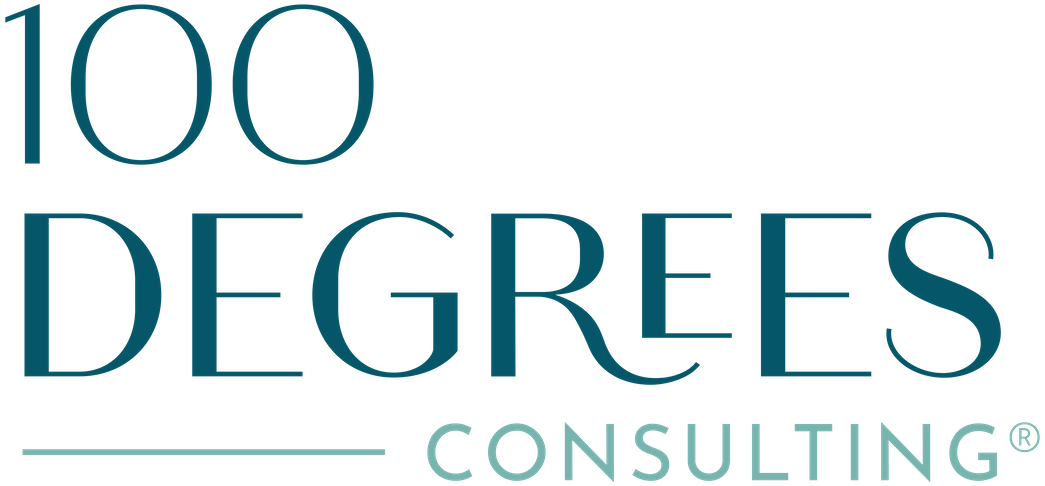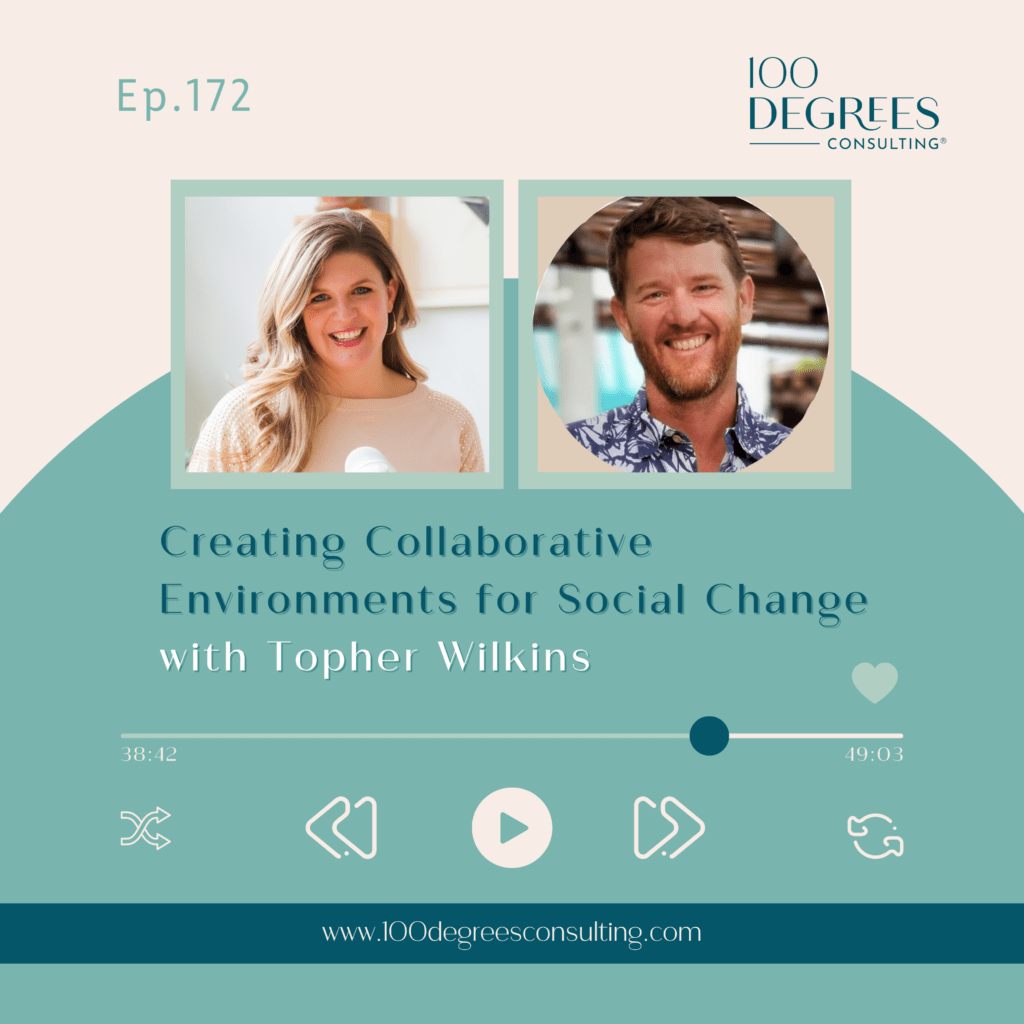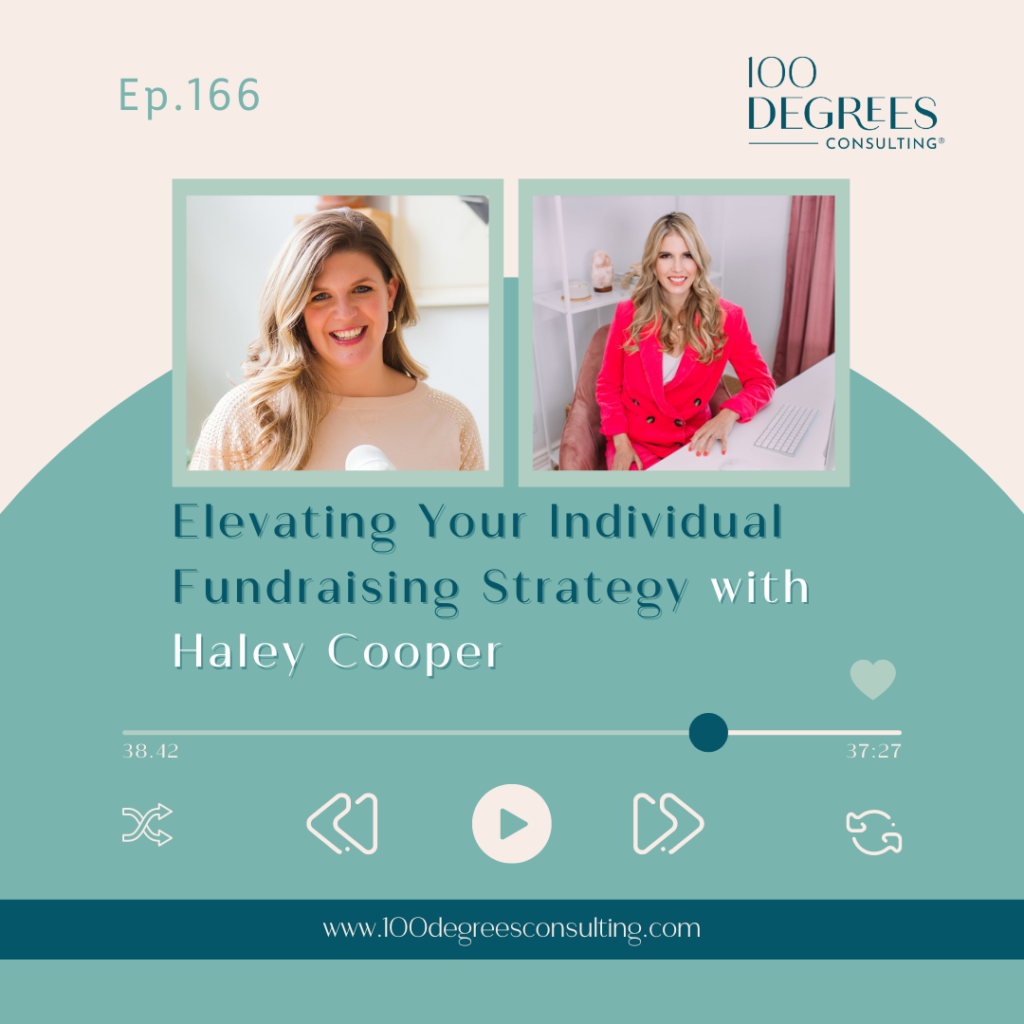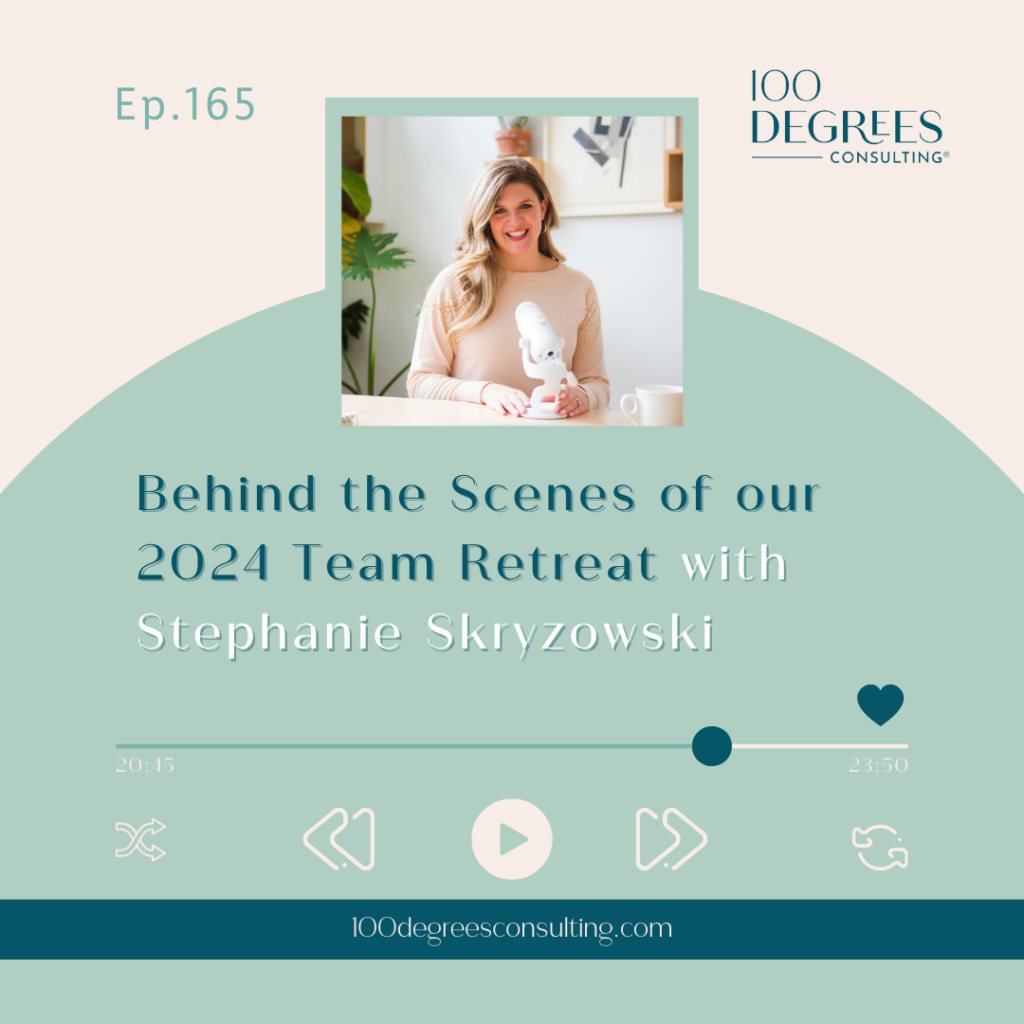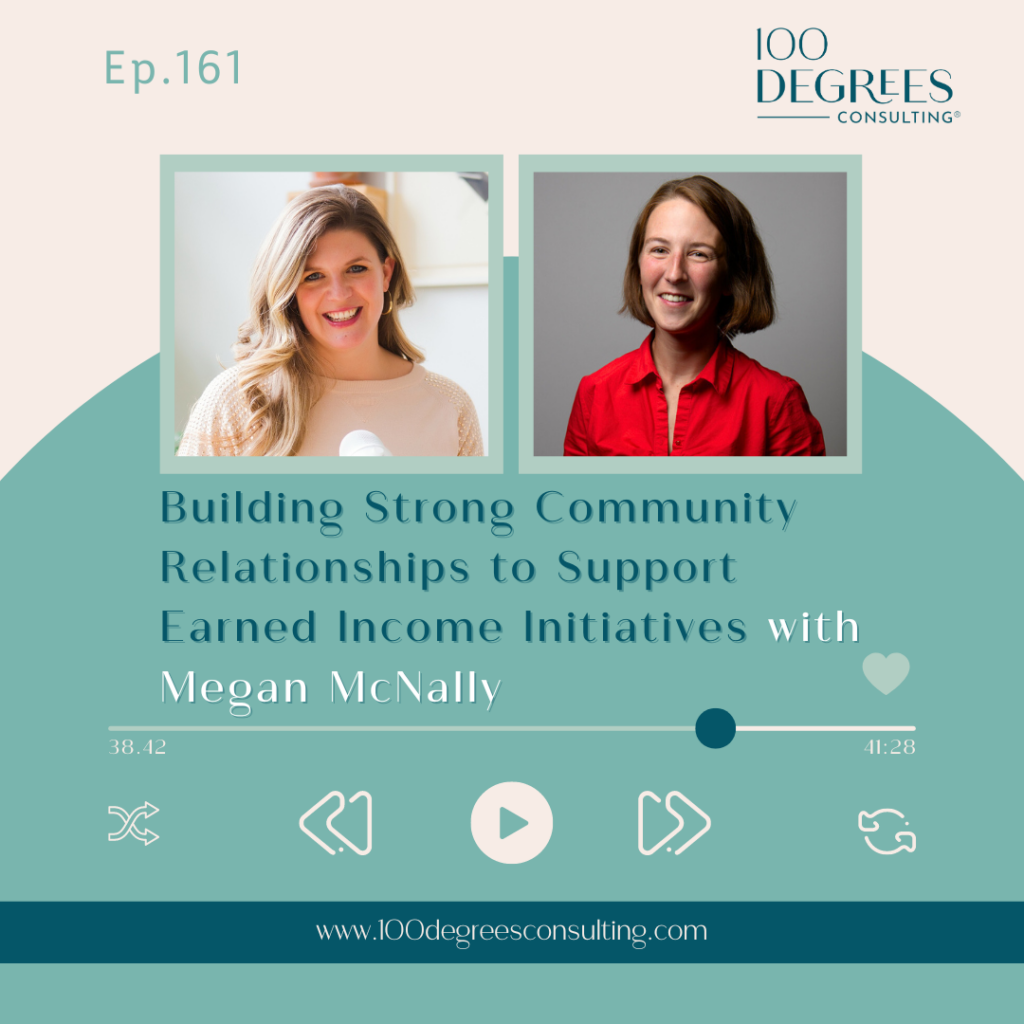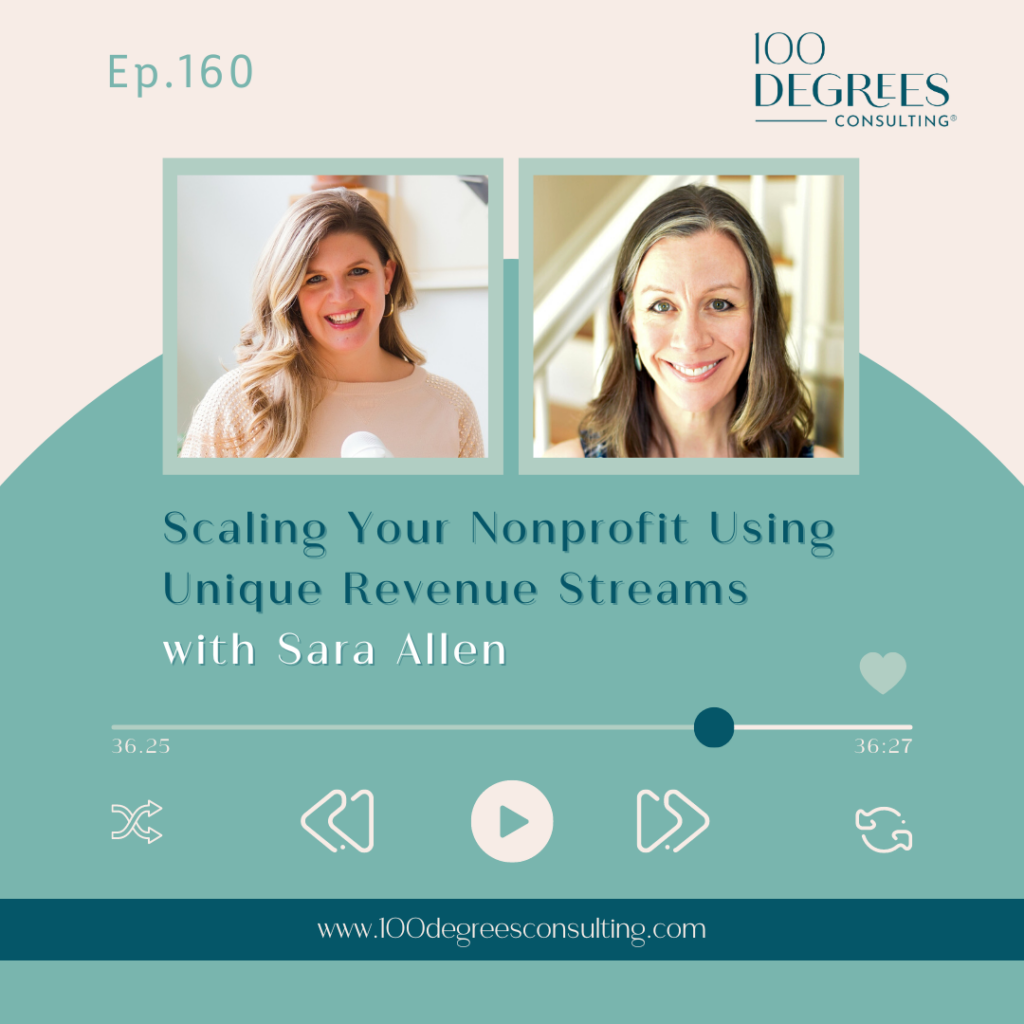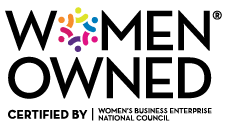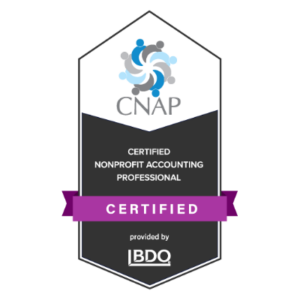Transcript Episode 164 – Creating an Organizational Culture of Wellness with Melissa Wesner on The Prosperous Nonprofit
[00:00:00] Stephanie Skryzowski: Welcome to the prosperous nonprofit, the podcast for leaders who are building financially sustainable and impactful nonprofits and changing the world. I’m Stephanie Skrzewski, a chief financial officer and founder and CEO of 100 degrees consulting. My personal mission is to empower leaders to better understand their numbers, to grow their impact and their income.On this show, we talk to people who are leading the nonprofit sector in new ways. Innovative, disruptive, and entrepreneurial ways creating organizations that fuel their lives, their hearts, and their communities. Let’s dive in.
Hey everybody, welcome back to the Prosperous Nonprofit. Today we are talking about burnout and wellness. So I’m really excited to have Melissa Wesner on the podcast with me today. She’s a licensed counselor, a brain spotting [00:01:00] consultant, and the founder of LifeSpring Counseling Services, which is a group counseling practice in Maryland.
And Melissa and I met a couple of years ago in a mastermind together. And, uh, And she is just such a proponent of workplace wellness and cultivating an organizational culture of wellness. And so we talk about even how wellness in your organization can increase your bottom line, right? So if our people are well taken care of and feel supported, how that could actually impact the financial health of your organization.
And you know, That that is something that I love talking about. So this was a fantastic conversation and you know, a lot of the things that we talk about, actually pretty much everything that we talked about does not require a huge budget or major resources. So we can create this culture of employee wellness without.
Breaking the bank without costing a lot of money, because I know that [00:02:00] resources might be limited. So I think you’re going to love this conversation. You’re going to walk away with at least three things that you’re like, okay, I’m going to do this right now. So it’s a fantastic conversation with Melissa.
Let me just read a couple more sentences about Melissa and then she drops a bunch of links and a bunch of resources and books and all the things in this episode. And so just go to the show notes and you’ll find everything that we talk about in there. So in addition to Melissa’s group counseling practice in Maryland, she loves hosting, planning and bringing people together for meaningful experiences.
And she hosts international retreats for entrepreneurs and leaders. And This episode is going live in the spring of 2024, and she has a retreat in Costa Rica coming up in April. She’s also the host of the dreaming and doing podcast, a podcast for big dreamers and action takers looking for weekly doses of inspiration from successful entrepreneurs and wellness experts.
So if you are. Really into wellness. And you want to hear more tips on [00:03:00] how to take care of yourself, how to prevent burnout, how to take care of your team and create a culture of wellness in your organization so that you can do more and have an even greater impact on those that you’re serving.
Definitely check out her podcast, dreaming and doing as well. All right. So without further ado, let’s go talk to Melissa.
Hey everybody. Welcome back to the prosperous nonprofit. I am so excited to be here. So excited to have Melissa Wesner on the podcast with me today. Welcome, Melissa. Thank you for having me, Stephanie. Always good to see you. I know we’ve just spent the last 15 minutes, like catching up. We were in a mastermind together for like a year, year and a half.
And so we spent lots of time together in different places around the world. And I’m so excited. So glad to chat with you today. So Melissa, why don’t you tell us a little bit about yourself and what you do for work?
[00:03:59] Melissa Wesner: Yeah. [00:04:00] So I am a licensed clinical professional counselor and I’m the founder of Lifespring Counseling Services in Maryland.And we’re a group practice. We have a team of therapists who provide individual therapy to children, adolescents, and adults. But one of the things that we love at our office is brain spotting that a lot of people haven’t heard about. So we love brain spotting. And also now I’m hosting retreats for entrepreneurs and doing a podcast called the dreaming and doing podcast.
[00:04:28] Stephanie Skryzowski: Amazing. Oh my gosh. Yes. So much good stuff. So tell us really quick what it, well, maybe not really quick. Tell us what is brain spotting because when you brought it to our mastermind, I think like 99 percent of us were like, uh, what is that? I’ve never heard that before. So tell us what brain spotting is. [00:04:45] Melissa Wesner: Yes. So at least in the therapy world, we would refer to it as a treatment modality, but it can be used by coaches as well, or people who do acupuncture and massage. So it’s a treatment modality that can be used to help people process information that’s stored [00:05:00] deeply in their brain and in their body. And people don’t even have to talk.We help them find a location in their visual field where they can best access that information. And thoughts, feelings, physical sensations, and memories naturally start coming up and get processed. And so we can use that to help people process difficult things like trauma, but also you can use it as a leader or an entrepreneur.
If you’re kind of up against a growth edge, something difficult happening in your organization, Or if you’re experiencing imposter syndrome, you can use that, uh, for those things. And you can also use it in an expansive way to help you be more creative, work through a writer’s block, for example. And so there are a lot of exciting things that can be done with brain spotting.
[00:05:49] Stephanie Skryzowski: That’s so cool. And is it like, can it be done virtually or do we need to like be sitting together in the same room? [00:05:55] Melissa Wesner: You can absolutely do it virtually. Some people are like, well, which one’s better? I [00:06:00] mean, I guess better is whatever you prefer, but both options are really effective. The only thing is that if you’re doing it from a therapy standpoint, then you do need to be located in the same state as your therapist, but if you’re doing it with a coach, then you can be wherever you want to be there.No like rules around that.
[00:06:18] Stephanie Skryzowski: That is so cool. So interesting. And I like how you just shared like the different ways that you might use it. There’s the, the therapy perspective, but also from, I like what you had said about like expansive thinking. I’m always about like, okay, how can I, how can I think more expansively?And I think you had done, didn’t you do a session for our masterminds people virtually, right? Yes, we did.
[00:06:43] Melissa Wesner: Um, I’m trying to think if we did expansion or not. We, I don’t remember if we did. We might not have done expansion, but we are going to do expansion on our retreat coming up. We’re going to be outside in Costa Rica.So I’m going to make use of this beautiful view that we have and we’ll do some expansion there.
[00:06:59] Stephanie Skryzowski: Oh, that’s [00:07:00] amazing. Yes. So tell us about, tell us a little bit more about the retreat that you have coming up. [00:07:04] Melissa Wesner: Yeah. So the retreat, as you know, cause you’ve been there on this journey with me doing this retreat, we’ve been doing these retreats as part of our mastermind.And I love hosting and I love bringing people together. And as we were on our retreat, I was like, I would love to be doing this. And so sure enough, after much conversation in our mastermind, uh, I decided to go ahead and do it. I’m doing a retreat in Costa Rica for entrepreneurs and leaders who are wanting to address their own wellbeing.
Once they can show up for their teams the way that they want to be showing up because if we burn out then so do our organizations or our businesses but also i’ve been doing a ton of research because as we know there have been so many things that we’re seeing during the pandemic that organizations are experiencing whether it’s hiring issues people being burned out in their organizations and retention issues and so i’ve been doing a lot of digging on those topics And the [00:08:00] information has been so interesting because my background is as a therapist So i’m Regularly talking with people about mental health and wellness, but also looking at how well being fits into our organizations and even our big ticket item concerns as organization leaders and business owners.
And so we’re going to be looking at wellness from that angle on the retreat as well.
[00:08:23] Stephanie Skryzowski: Oh, that’s amazing. It sounds so dreamy. Like we were talking, I’m not exactly sure when this episode is going to come out, but if it does come out before your retreat, where can we find more information about it? We’ll just start that real quick. [00:08:38] Melissa Wesner: Yes. So I can send you the link so you can put it in the show notes, but the easiest way right now is either to check out the dreaming and doing podcasts. We have the link in our show notes. There, or to go to my counseling website where we have like our page at life spring counseling. net. [00:08:55] Stephanie Skryzowski: Awesome. Cool.Thank you. Yeah. We’ll definitely drop those links there. So if anybody is looking [00:09:00] for a wellness retreat in Costa Rica with Melissa, definitely we’ll, we’ll have those links there to check it out. Okay. So let me back up. This podcast, as we all know, who are listening, this is called the prosperous nonprofit.
And at the end of every episode, I ask all of the leaders that I interview, what does a prosperous nonprofit look like to you? And so many of the answers, I mean, pretty much nobody is thinking or answers with a financial perspective. Nobody’s like, Oh, a prosperous nonprofit is one that has. 3 million in the bank.
No, they are answering this question with things like their employees are well taken care of. Their employees are not burnt out. Um, their employees really feel supported in their job. Um, they have a really strong organizational culture. And I think the reason that these leaders are answering in that way is because that’s not really the norm in the nonprofit sector.
So many nonprofit leaders just care so much about. The mission [00:10:00] and about the work that they do, that they almost, I was going to say, don’t even realize that they’re burnt out. Maybe that’s the case, but maybe they do realize that they’re burnt out. They’re martyring themselves to the mission of the organization and having this like compassion fatigue.
So burnout is huge in the nonprofit sector. So I would love to just hear you talk a little bit about what you’re seeing in terms of burnout and how can we prevent that, especially as leaders who are in this sector of like. Purpose driven work.
[00:10:32] Melissa Wesner: Yeah. Burnout has been such a huge topic, especially, I think maybe not initially in the pandemic, but certainly like a few years in that’s especially, at least in the community of therapists.That’s when I began seeing everybody talking about burnout. And I think one of the things that has changed, at least for therapists is that we’ve been working in isolation and we’ve all worked from home, which was great from a safety perspective from COVID. But. In [00:11:00] working from home, I think people started to feel really lonely, really isolated.
Some people’s workloads have increased during the pandemic, especially if you’re in a non profit or a helping profession. You’re taking on more because you want to be helpful. You’re thinking about other people, but sometimes in that process of helping other people, you lose yourself in that process. And I think for people who are women, Often in these helping professions or service industries, nonprofits, people can feel really guilty for taking care of themselves.
They want to make sure that their children are okay. Their families are okay. Or. Everyone else, but themselves is okay. And they feel really guilty for looking at how they’re doing and taking care of themselves.
[00:11:45] Stephanie Skryzowski: Yeah, absolutely. I definitely think we certainly tend to push ourselves to the bottom of the list, especially when we’re working with an organization that’s just like so high needs.There are so many people that need our services and need our work [00:12:00] that it’s like. I just have to keep going because the list is never ending. So what would you say to those people? How can we start thinking about preventing burnout before we get to the point where we just like cannot move forward? What are some things we need to be thinking about or doing?
To start to take care of ourselves. And I’m sure that I know you’re not going to say like, go get a manicure, like get a massage. I think our, our leaders are not going to be like, yeah, I don’t need a massage. I know that’s not what you were going to say anyway, but tell us a little bit about that. How can we prevent burnout before we get to the point where it’s like, we simply can’t go on.
[00:12:36] Melissa Wesner: Yeah. I think the first thing that comes to mind is something that I tell people all the time is say yes. When you want to say yes, say no. When you want to say no. Yes, so sometimes, you know, we can maybe have a trait where we want to please everybody. We have this people pleaser trait, and so we want to make everybody happy.And so we say [00:13:00] yes, even when we don’t want to say yes. And the problem with saying yes when we don’t want to say yes is that That’s when resentment comes in. Maybe your boss asks you to do something and you want to make that person happy. And so you tell them yes, even though you don’t really want to. Um, or even it could be like your partner.
Your partner asks you to do something and you say yes, even though you don’t want to, but you want to make them happy. But that’s a problem because then we do get resentful. So imagine your partner asks you to do something. You say, yes, you don’t want to say yes. So then you go and you start doing that thing with your partner and now you’re all grouchy and moody and you’re sending them vibes and you’re like, dude, what’s the problem?
Like, why are you being so miserable? Right? But that’s happening because you said yes when you didn’t want to say yes, and you said yes because you wanted to make someone else happy. But oftentimes at the end of the day, we say yes to make someone else happy, and then they end up unhappy because we’ve been moody and [00:14:00] grumpy and kind of whiny as we’re going in that process.
So, I would say, Say yes when you want to, and say no when you want to, and understand that when you say no, you have to be okay with seeing the other person be uncomfortable. So if, you know, you say no to somebody, then you have to be okay when that person goes, I don’t know what I’m going to do now. Oh man, you know, who am I going to get to help me with this?
You’re just going to have to be okay sitting in that discomfort. That doesn’t mean that you need to change your answer. Okay. But you need to be, you need to get comfortable with the discomfort that comes up when you say no, is one of the things that I think about as a starting place.
[00:14:47] Stephanie Skryzowski: I love that because that discomfort or that, like their response is not your problem.Like that is a them thing, not a you thing. And yeah, I think when I, I love that because [00:15:00] one thing that I, it’s very similar, but I’ve told myself, or like, Sort of coached myself is to say yes with joy, like say yes. The things we’re really excited about and to say no with courage, because it does really take courage a lot of times to say no, especially for those of us that feel like we’ve got a little bit of people pleaser in us.
So I absolutely love that. And to be really intentional about what you are saying yes to. I actually just did that the other day. I had an event on Sunday that I was just like, not really wanting to go to and not really feeling. And so. I said, wait, why am, why am I doing this? Like nobody is, I’m not getting paid to do this.
Nobody’s expecting any, like, I’m just, I’m not going to go. Like, yeah, yeah. I’m just not going to go. So I love that. Okay. So say yes. When you want to say yes and say no, when you want to say no, that is a great start. Do you have any other like suggestions or ideas?
[00:15:53] Melissa Wesner: Yes, I think the other thing is, one, give yourself permission to not feel guilty about [00:16:00] taking care of yourself.And if that sounds really hard to do, like, okay, well, yes, if it weren’t just that easy, I would do it. But also understand that when you do take care of yourself, you are in fact helping everybody else around you, right? When you do take care of yourself, you are. Taking care of your family. You are taking care of your team.
Because if we think about how we show up when we’re not taking care of ourselves, we’re just like running ourselves ragged and we’re exhausted. We’re overwhelmed. We are in that mode of like, I have to be the one to like, do all the things. One, maybe we are being a bit of a martyr or kind of having a bit of a savior complex that, uh, we’re not really showing up like our best self.
And we’re not necessarily going to be. A good time to be around. So if you’re, you know, our coach, for example, I don’t know if you were in this meeting, uh, she was talking about like, if we’re always like, Oh my gosh, I’m so tired. I’m so tired. I’m so tired. Or I’m so busy, [00:17:00] right? Like what kind of energy are we bringing to our team meetings?
What type of energy are we bringing to our families and the people around us? Right. And so if we want our organizations to thrive, if we want our teams to thrive, then we have to understand that our energy does matter. And that, that does require us to take care of ourselves. And also if we’re telling everyone else about how they need to be taking care of themselves, we need to model that behavior, right?
Imagine a parent who’s like actively smoking a cigarette, telling their child that they shouldn’t smoke. So like, is that kid going to listen to you? No, because you’re not modeling that behavior. So if you’re a leader and you are telling everyone else about how they need to take care of themselves, but you are not doing it yourself, they’re going to be like, Whatever.
Right? They’re not going to listen to you because you’re not modeling that. You’re modeling what it means to be running ragged.
[00:17:56] Stephanie Skryzowski: Mm hmm. And it almost is like telling [00:18:00] them without telling them that that’s how they should be acting. Like even if in your head you’re like, no, I don’t want them to do that.Well, your actions are telling them that like, that’s how they should be acting. Yeah. I think about that because I. You know, I often work, not often, but I do sometimes work outside of normal business hours. And I used to just like send the email to somebody on my team or whatever, but then they would respond.
And I’m like, no, why are you responding to me? You should not be responding to me right now. But I’m like, Oh, but I just sent them an email. So they probably feel like they need to respond. And so now I schedule all of my emails for like the next day or during business hours. So they’re not like feeling like they should.
So I think that modeling behavior. That you want to see in your team, because I think we all do want the best for our team and for our organization. We know that like, you know, working at that level is not really what we want for them. So why are we, why are we modeling that? I think that’s great. And I think your point about not being able to show [00:19:00] up as your best self, if you are burnt out, I think that’s such good advice.
I think about that in two different ways. Like as a parent, I know that I am not the best parent that I Can be, or that I want to be if I have no time to myself ever, like I need quiet time with just me if I want to be the best mom that I can be to my daughters. And so thinking about that in work as well, if I am scheduled for calls back to back for multiple days in a row.
I am not bringing my best brain and my best self and my best attitude to each of those calls. And so i’ve shifted my calendar so that I do not have back to back calls on back to back days. Like i’m just not going to be my best self, but if I continued On that path of having back to back calls every single day of the week, that would 100 percent lead to burnout.
So I think that’s really, really good advice as well. And just emphasizing that because it’s something I’ve noticed [00:20:00] in my own, you know, in my own work life by, By backing down and by building some boundaries that has helped me a lot. And yeah, speaking of boundaries, how have you seen like boundaries playing into preventing burnout?
And do you have any recommendations or any thoughts on, you know, how we can set better boundaries for ourselves?
[00:20:20] Melissa Wesner: Yes. Well, I love that. And the other thing really quick that I’m thinking about is you and I are talking is that these, Right now we’re encouraging people to take care of themselves for the well being of, you know, themselves, obviously their team and their organizations, but this message runs counter to the message that we’ve probably received for most of our lives from our family of origin, also from our workplaces, right?Oftentimes we hear like, oh wow, Bob is such a hard worker. He’s the first one in and he’s the last one to leave. Okay, maybe he is, but also research shows that working such long hours. We’re actually less productive than [00:21:00] when we’re in the office for like a normal amount of time, you know, or we’ve heard these messages about hard work in our families.
And so we’ve taken that in that that’s what we have to do to be successful. We have to work hard rather than understanding that self care can be our business strategy. But I think some boundaries that we can be setting are one saying no, when we want to say no, it can be agreements in an organization like the one that you just mentioned yourself.
And that’s something that we’ve done at my office as well, saying, you know, we’re not going to be sending emails at night and on the weekends. And if someone decides on their own that they’re going to be working, then. We’re going to send those scheduled emails. So I think that there are boundaries that organizations can set collectively for the health of the organization.
Like, how are we going to respond? How are we going to deal with emails? So we don’t have this expectation that you need to be checking your phones or your email all the time. Um, boundaries [00:22:00] about communication, like texting, like, you know, I know that some business owners or leaders are like, don’t be sending me a hundred messages all the time.
Like I want to be off. So some people have strong feelings about that. And also encouraging people to go home on time. Like can be like a community expectation. Like, we don’t want to see people here working long hours. Like we want people to go home. So I think organizational boundaries, in addition to your own boundaries.
You know, one thing that I think comes up that I see with people who are in health care, especially nurses, because hospitals, there’s so much going on there. But, um, you know, sometimes I see people like nurses say yes to a hundred extra shifts. So they’re already working their full time job and they’re taking one or two extra shifts because their nurse supervisor is asking them to work because they don’t have coverage and the hospital hasn’t hired enough people or didn’t want to or couldn’t, whatever the case might be.
So then [00:23:00] the nurse feels bad for their nurse supervisor, and they don’t want to work an extra shift or two, but they say yes because they feel bad for their nurse supervisor. But as long as everyone in that organization says yes to requests like this, that nurse supervisor never has to go to the higher ups, the people who do have the decision making ability to make sure that their unit is properly staffed.
So understanding how some of these things can, uh, Come up systemically as well and how sometimes it has to start with us saying no, like maybe you can’t count on the organization to hire the people that they need. But if everyone individually starts setting the boundaries, no, I’m not working late. No, I’m not taking on the extra shift.
And while that might feel bad to set that boundary because you know someone else is going to struggle for a minute, it does mean that organizations then have to shift.
[00:23:57] Stephanie Skryzowski: I didn’t even think about that, but that’s such a [00:24:00] good point. Like if everybody says yes to the extra work and, um, and doesn’t set those boundaries, the organization is going to think like, okay, we’re good.I guess. Great. We’ve got some savings in our salary budget. Cause we don’t need to hire somebody. Cause y’all got it covered. Amazing. Meanwhile, like the team is crumbling on the inside and like. You know, getting ready to leave and maybe they even do leave and then the organization doesn’t even really know that anything is wrong until people are already gone.
Yeah, that’s, I, that’s a really good point. I love that.
[00:24:33] Melissa Wesner: Right. Well, and even if we’re thinking healthcare, right, thinking about hospitals, hospitals might be like, well, no, we can’t hire any more people. Maybe it’s a funding issue. Okay. But if we think about this, if you burn out your staff, they’re going to leave.Uh, if they’re coming to work exhausted because they haven’t slept or because they’ve worked a bazillion hours, now we’re increasing the likelihood of errors being made, which can cost you a ton of money. [00:25:00] And so understanding that taking care of your employees in that way is beneficial from an economic standpoint as well.
[00:25:12] Stephanie Skryzowski: Hey there, amazing listeners. I hope you’re enjoying another fantastic episode of the Prosperous Nonprofit. Take care. Before we dive back in, I have a quick favor to ask. That’s right. If you are getting value, knowledge, encouragement, or even just good vibes from our show, please share The Prosperous Nonprofit with a friend or colleague who you think would love it as much as you do.It’s like passing along a good book or recommending your favorite local coffee spot. Please take a quick second to hit that share button, send a link, or even give a shout out on social media. Your support means the world to me. Thank you for being awesome. Thank you for being here. And now back to the show.
I know one thing we wanted to talk about is how, you know, wellness [00:26:00] and building a culture of employee wellness can really impact the bottom line of an organization. And as nonprofits, a lot of times, Every single dollar is precious and resources are often hard to come by, or we have limited budgets. And so I think that sometimes a short sightedness in, in nonprofit leaders where it’s like, well, yeah, I can’t afford to hire another, you know, 75, 000 salary.
Right, but if you don’t, and this person burns out and leaves and, or like you’re saying is not effective at their job or opens us up to a lot of liability and risk, like, what is, what is the impact of that? So I think there’s like a lot of shortsightedness where we’re like, yeah, we just can’t hire another person right now, but how can, tell us a little bit more about how wellness can really impact the bottom line of an organization.
[00:26:54] Melissa Wesner: Yes. Well, I have so many thoughts here. [00:26:58] Stephanie Skryzowski: Tell me all of them. Tell me all of them. I have so [00:27:00] many. [00:27:00] Melissa Wesner: You know, just on a very general level, thinking about when employees are not actually doing well, we deal with things like absenteeism. If they’re not showing up, you are fired. You know, like you’re paying for maybe them to be out of the office, and they’re not getting work done, or even presenteeism, which people might not talk about, where people are showing up to the office, but they’re not getting stuff done, they are there.It’s, you know, a warm body. Um, you are paying someone to sit there, but maybe not get stuff done, right? Those all cost time and money. And so, just on a very basic level, thinking about that. In understanding that, taking care of your employees well being does not have to necessarily mean that you have to spend all of this money on extravagant things, right?
Uh, there are a lot of things that we can do to take care of our employees well being, right? Like, a benefits package, that is great, that’s one way that you can show your employees that you take care of them, but that’s not the only way. [00:28:00] If the people listening are readers, Gallup has come out with a ton of really great books.
One of them is called Wellbeing at Work, Culture Shock, and it’s the manager that talks about just how important great managers are for your team engagement. So I highly recommend checking out those books. But I want to share something from Gallup’s new book called, new ish book called Culture Shop. Or culture shock and unstoppable forces changing how we work and live it says so my observations kind of maybe 2023 in particular are that and maybe 2022 as well is that a lot of organizations were having issues with hiring people.
And also retaining people or people leaving the workplace in large numbers, uh, tons of people talking about burnout, these are all like the hot ticket items that people were talking about, you know, but, and obviously I think that some of that is related [00:29:00] to the pandemic. Um, but we think about how do we address hiring?
How do we address retention? Um, there’s conversations about do we work remote? Do we work in person? All of these things, right? And you might think about, well, I need to, um, maybe hire someone or pay someone to bring in new, new workers, right? Which is, you know, A lot of money, but uh, maybe not a lot of conversation around how can we use wellness to address that?
So I just want to share this one section of the culture shock book that I love. Okay So they did tons of research. So it’s very recent research And it says employees who strongly agree That their employer cares about their overall well being Compared with those who don’t, are three times more likely to be engaged at work, are 69 percent less likely to actively search for a new job, [00:30:00] They are 71 percent less likely to report experiencing a lot of burnout.
They are five times more likely to strongly advocate for their company as a place to work. They are five times more likely to strongly agree that they trust the leadership of their organization. And they are 36 percent more likely to be thriving in their overall lives. And. Not, that’s not it. There’s more.
They said that they found that teams most likely to feel like their organization cares about their well being have higher customer engagement, profitability, and productivity, lower turnover, and fewer safety incidents. So if we’re thinking about all those things that I just read, right? If there’s a safety incident on the job that costs you money, right?
Profitability, or I mean, productivity, money, customer engagement, right? That influences customer satisfaction. Who’s coming to us. We think about [00:31:00] marketing and getting the word out about our services or our products, but if your team is the one who is talking about how great your company is, one that’s going to help is your.
with your product or your service. It’s also going to help as you’re looking for new people to join your company. So just thinking about how taking care of your team’s well being can help you hit all of those really important items that companies care about and probably have no idea that addressing wellness is one way to get there.
[00:31:35] Stephanie Skryzowski: Yeah. I mean, those are some powerful statistics. That’s awesome. Thank you so much for sharing that. And I just wrote down, it will put the name of the books, the three books that you mentioned in the show notes, and I just wrote them down and like add to Amazon cart. So that is amazing. And it doesn’t sound like creating a stronger culture of wellness in your organization necessarily needs to cost a [00:32:00] lot of money, right?Like, what are some. Things that, you know, that we can do to build this culture that maybe don’t necessarily mean, oh, we’re going to like ramp up our health insurance and it’s causing going to cost us an extra hundred thousand dollars a year. Like that’s sure. Maybe that’s one thing, but that’s not what you’re saying.
There’s, there’s a lot more that we can do. That’s not going to cost a lot of money.
[00:32:21] Melissa Wesner: Right. And one thing that I think would maybe be really important to add here in the section that I just read, it says employees who strongly agree that the employer cares. Right? So that’s really important, I think, because in their research, they’re looking at the employees.So the employees have to strongly feel that the employer cares about their well being. So, you know, if an employer or a non profit Is like we’re just gonna give them all these things. We’re gonna give them all this PTO and these great benefits, but people don’t actually feel cared for. Then that’s not gonna work, [00:33:00] right?
Like I’m today I was thinking about like imagine if you had a parent who just like threw money at you all the time as a kid, right? like Uh here go buy that bag that you want. Stop your temper tantrum here. Go buy this. Here’s a credit card go Right, but that parent didn’t give you time You Energy, nurturing, and love.
Like, it wouldn’t really matter that your parent gives you money all the time, right? Because the thing that you probably want the most from them is I want their care, right? I want to know that I’m cared for, but the same thing with an organization, an organization can give people money and all these things like benefits, but if someone truly does not feel like the company cares about them or that an organization really cares about their wellbeing, then that’s going to be a problem, right?
So really understanding, like, how do we facilitate a culture that communicates care for how our employees are doing? I think is also part of it, right? And that’s part [00:34:00] of your office culture. There’s a lot of research in these books about just having a, a meaningful conversation, 15 minutes a week with.
Your manager, 15 minutes a week. And all of these books, they talk about this 15 minute conversation and this coaching conversation. And also one that focuses on strengths. They were saying that people don’t love talking about what they’re not good at, but a 15 minute meaningful conversation with the manager that is growth oriented.
And that is strength oriented. Just how impactful that is.
[00:34:37] Stephanie Skryzowski: That’s so interesting. Yeah. 15 minutes. Like we can all carve out 15 minutes to help our employees feel like the employer cares. I think that was really interesting that you, um, sort of emphasize that again, because as you, when you read it the first time I heard that, that, you know, it was Feeling like the employer cares.And so that’s not has top of the line, a [00:35:00] platinum level benefits package, or has, you know, eight weeks of PTO, like, no, they just have to feel like you care. And so that means you just have to genuinely care. Yes. Yeah, that’s really interesting. And I think that like distinction or that sort of like little nuance that you pulled out is so important because you can care a lot without spending any money.
Um, yeah.
[00:35:24] Melissa Wesner: And I’m thinking about, I don’t know if you’ve done this, Stephanie, but. If you remember one of the retreats that we went on, um, the speaker was talking about a weekly check in that they do, and they have like five questions that they have their employees do at the end of the week, so that way they know, like, how was your week this week?How stressful was your week? What do you need support around? And we’ve added some questions like, who do you want to shout out at our office? So we’ve also implemented this weekly check in for our team just to see how are they doing? How stressed out are they? And again, the person who spoke with us about [00:36:00] their check in was saying, because then if on Friday, I know what’s going on, we can address it.
And Monday people can come in feeling good, whatever challenges they were experiencing, we can help support them. So on Monday, they’re good to go. And we’ve been doing that at my office. Uh, and it’s been really interesting because I’m finding out, you know, what are the challenges people are experiencing so I know how to show up and support them.
I’m also finding out what are some of the things happening in people’s personal lives that I wouldn’t have known about otherwise, that they’re just kind of putting on my radar so I can also offer some support around that. And, uh, so it’s just been really interesting. Again, just a little check in. It requires just a few minutes of my time each week, but, uh, allows for some more connecting to happen.
[00:36:47] Stephanie Skryzowski: Yeah. Oh, that’s yeah. That’s huge. And I like that. It’s like, you’re not necessarily approaching that meeting with an agenda of like, here’s what I need from you. Here’s, you [00:37:00] know, what decisions do I need to make with a checklist? Here’s what needs to happen this week. It’s like, how are you, like, how are you actually doing?Yeah. That’s huge. I think that’s huge and giving people a venue and a place to say like. Actually, things aren’t really great right now. I think that’s a lesson that everybody listening can take. And again, that does not cost anything, but can make a huge difference in helping employees feel like their organization cares.
That’s so good.
[00:37:32] Melissa Wesner: And just to add, I was doing a workshop in the community recently on this topic with a bunch of HR professionals and, um, one of the comments someone had was, yes, the organization where I work, they just did a team building activity. It was something about using like spaghetti noodles and marshmallows.I think it’s a popular activity. I haven’t done it. Personally, but I’ve heard of it and they were like, people were raving about this activity, right? Because it sounds like that [00:38:00] activity, that team building activity was not the norm for this organization. And so when they did that activity, it was like, oh my goodness, this was so great.
We had such a good time. And so sometimes it really is the little things, the little ways that we can prioritize people and make them feel cared for.
[00:38:19] Stephanie Skryzowski: Mm hmm. I know. Yeah, I feel like I know what activity you’re talking about. You got to build something. Yes. Yeah Um, oh, I I love that. Are there any other suggestions before we start to wrap up our time together for really?cultivating the Organizational culture that you want, because I would venture a guess that if anybody’s listening to this podcast, they’re thinking, well, yeah, I definitely want a culture of wellness. I want to take care of my employees and I want people to feel like this is a good place to work, to be able to make a difference and not feel burnt out.
And so how do [00:39:00] we sort of cultivate this organizational culture? Of wellness. Are there, are there any other things that maybe we haven’t talked about yet that, um, leaders can be thinking about?
[00:39:11] Melissa Wesner: Yeah. I think the first thing that I think about is like, talk to your team, right? Like sometimes as leaders were like, Oh, I wonder if I did this.I wonder if I did that. We’re just going to do this. And sometimes it’s just maybe like throwing spaghetti at the wall to see what fits and what sticks, but like, you can talk to your team. You know, when we first started offering different benefits at my office, I We sent out a staff survey. We’re thinking about adding some benefits.
What are the benefits you would like are that are most important to you? Rank them. So sending surveys to your team, whether it’s about your benefits package to see what they want or what they don’t want. Maybe you’re offering something and you feel like, Oh my goodness, this is really such a big give, but like maybe your team doesn’t care about it.
So you can ask your team [00:40:00] what they would appreciate and find helpful. And even if you wanted to find out about. How your team is feeling about the organization and wellness, send them a survey, ask them, find out because then we don’t have to guess and they will tell you and Gallup, I believe, has, um, like a 12 question survey or questionnaire that they have used that.
Leaders can check out as well, uh, to see if you are able to utilize that or to modify that, but remember to talk to your team rather than guess what they want, assume what they want, like go to them and ask them, get their input because they’re going to be a great source of information.
[00:40:44] Stephanie Skryzowski: That is such good advice.And it’s like, that seems so simple and obvious, but often we’re thinking of like, Oh yeah, I think, you know, we, what we should be doing. And it’s like, wait, does our team even want or need or care about this? And that’s something that we do often. And what I will [00:41:00] say is that sometimes receiving feedback from your team can be difficult.
Um, because if you’re really giving them an opportunity to be honest, like their feedback might. I know I felt like, you know, we’ve done these surveys before and I’m like, Oh, I thought this thing would be good. And everyone hated it or like, Oh, I really was trying hard here and it just didn’t land or whatever.
So it can be difficult, but that is what is going to lead to. You know, doing things that your team wants and really making an impact. And yeah, it’s been painful for me sometimes to read some of the feedback when it’s like my intentions were good, but it just didn’t land the way I wanted or whatever.
[00:41:44] Melissa Wesner: Yes, I hear that.We have done a survey as well before. This was a few years ago and I gave them a survey. We do like an annual like retreat and I had some questions for them that I wanted to know and consistently I saw a lot of people who [00:42:00] were like, I appreciate it. Um, I’m nervous about how much you work and I’m afraid that you’re going to burn out like that was consistently coming up on this survey, which one I was glad to see, which sounds weird, but I was glad to see it for two reasons, because as a leader, one of the things that I was always worried about is, oh, my gosh, does everyone just think that I’m like here doing nothing sitting on my hand?
Yeah, we use like this. Fear that I have. So I was like, okay. They know that I am working hard. Like okay, I don’t have to worry about that. And also at the time we were working on shifting some things and bringing in another clinical supervisor to support us and me. And so that was a really helpful to see what they were seeing and to get that honest feedback.
And also to know that it was in alignment with some shifting that we were going to be doing in that next year.
[00:42:50] Stephanie Skryzowski: Yeah, that’s so funny. Um, I feel the same thing. I’m like, I hope the team doesn’t think I’m just like gallivanting about like doing whatever. I’m like, I swear I’m working hard. [00:43:00] Can check my emails.Yes. Yeah. I love that. I think this survey is huge and yeah, we use that to figure out like. Are we going to continue doing our team retreat? It’s quite a big investment. And I feel like it’s a good use of our time and money, but like, does everybody else feel like it is? Cause if it’s not like I will gladly save the, you know, 30, 000 or how much ever it costs to do this.
So, yeah. Um, I think that’s, I think that’s awesome. That’s a great way to, that’s a great place to start, I would think, right? Like. Let’s start with a survey, see how our team is doing, see what they’re thinking, what they need, and then kind of go from there.
[00:43:39] Melissa Wesner: Absolutely. And I don’t know if anyone that you work with or who’s listening is trained in motivational incentives, but I’m also trained in motivational incentives, which you can use with your team.You can use motivational incentives with clients. Banks do it all the time. Get this free thing when you sign up for your new checking account, right? So we’re saying this is the desired [00:44:00] behavior, opening up your checking account, and you’ll get this free whatever it is, toaster oven. But again, even if someone is doing something like motivational incentives, you still want to ask, you still want to know What would motivate people to complete this action?
Right. Cause if, like I worked at an organization and they would ask people what they wanted, but on one occasion they had like all these Pepsi Cola hats that were donated to them cause we were a nonprofit. But like, who’s like, yes, I’m going to go to group therapy because I want that Pepsi Cola hat. Like probably nobody.
Right. Like, so you have to ask people what do they want? So that way you can design like a program. But again, it goes to like asking people what they want.
[00:44:42] Stephanie Skryzowski: Mm hmm. Yes. Yeah. I think that’s so good. Awesome. Okay. Well, like I mentioned before, one question that I ask everybody before we close the episode is what is a prosperous nonprofit look like to you?Yes. Well,
[00:44:57] Melissa Wesner: I think that that [00:45:00] is a very good question. I think the thing that I first thought about when you asked that question is, like, something that comes from a place of abundance. An organization that comes from a state of abundance, right? Thinking that a mindset of, like, We’re doing good work, and therefore the clients that we need will come, we are doing good work, and therefore the people that we need to work at our organization will come.Um, and, and just kind of trusting in the work that you’re doing and how that will attract the people that you want, the clients you want, the people you want to work at your office.
[00:45:35] Stephanie Skryzowski: Yeah, I love that. So good. Okay. You have a couple links to share with us with, I think a couple freebies. So can you tell us about those?And then for our listeners, don’t worry. You will get the links in the show notes, but tell us about the freebies that we’ve got.
[00:45:51] Melissa Wesner: Yes, so I love the things that we’ve put together. I know we’ve put them together, but we do have a burnout prevention plan. [00:46:00] So that way, people who are like, I’m feeling a little crispy or I don’t want to get crispy, just some things that they can do that are maybe different than The typical recommendations for, you know, we’re not, it’s not like go to the nail salon, but we have a lot of different strategies on there about getting stress off your body, minimizing burnout that I hope leaders will find helpful or people in your organization.People can share it with, um, the people who work at their nonprofits. And these are very simple, doable strategies for preventing burnout. They can be done quickly, easily. The other thing, uh, when I work with people who are leaders, uh, or entrepreneurs, they have a terrible time trying to leave the office.
They’re like, I feel stressed when I leave the office, I’m worried about some catastrophe happening, or what if people need me. You know, they just feel like they can’t leave the office or take time off. And so we’ve also created a checklist to help people get out of the office to think about these are all of the [00:47:00] things that you can do to get ready to leave the office so you can go and you can have a free mind knowing that you’ve done all of these things before your time out of the office so that your team is good.
They’re taken care of and you can not think about work while you’re on vacation or on a retreat or wherever you’re going.
[00:47:21] Stephanie Skryzowski: Oh my gosh. I love that. I need that. I will go download that. That’s fantastic. Well, thank you so much, Melissa. We will put the links to all of these. We’ll put your, um, yeah, your website link and these two, um, links.Really useful resources as well as your retreat link. All of the things will go into the show notes. So everybody listening, please go check that out. And then, Oh, also your podcast, your podcast, tell us the name of your podcast and where we can find it.
[00:47:49] Melissa Wesner: Yeah. So it is the dreaming and doing podcast and it’s on apple and all of the other places, but.It is a weekly podcast where we’re providing [00:48:00] inspiring episodes for people who are big dreamers and action takers who are wanting some inspiration from people who are wellness experts and successful entrepreneurs.
[00:48:09] Stephanie Skryzowski: Amazing. Yes. Definitely go check that out and you and I, I think are recording an episode on Friday that yes, we are.Show. Oh, so exciting. Awesome. Oh, Melissa, this was so good. So useful. So many actionable things that our listeners can easily take away and start implementing immediately, which is my favorite kind of conversation. So thank you so much for being here. I appreciate you. All right. Thank you, Stephanie, for having me.
Before you go, I just want to thank you for being here. To access our show notes and bonus content, visit 100degreespodcast. com. That’s 100degreespodcast. com. And I’ll see you next time.
